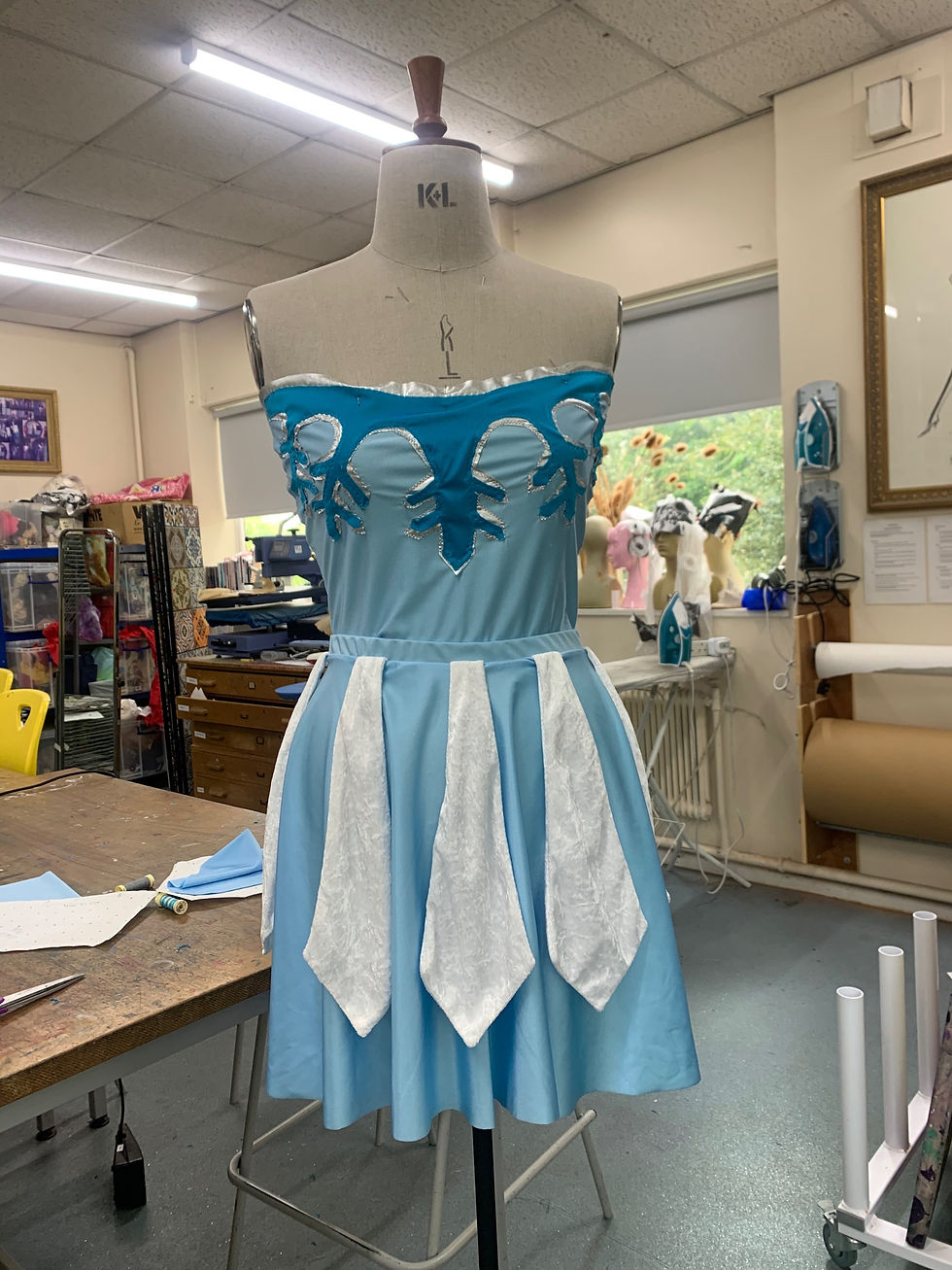DRAPING EXPERIMENTS
- Louise Love
- Mar 14, 2023
- 3 min read
During recent patterncutting lessons we have started to look at the technique of draping to create 3D looks that we can then translate into flat patterns. This will be useful during Final Major Project to create exciting outcomes and to also explore different ways of working so I can find the best way that works for me
Draping Lessons: Week One
During the first week of our draping lessons, we were taught the process of draping, which involves pinning your desired look on the stand; adding in pleats and design features, etc. utilising a big sheet of fabric to insure you have enough to play around with and fit the body. You would start by working the basis of your design into place on the stand using pins to secure, and the next step would be to start to draw-in seam lines, necklines, armholes, etc. following the manequine lines, e.g. side seam lines you could actually feel through the fabric and on the stand to be able to draw-in. And this would then allow you to start to cut-down the fabric, of course leaving seam allowance widths to work with later on. At this stage you could also start to look at and consider fit, so for example, I started to pinch-in where I wanted my bust darts to sit so that I could create a more fitted look as desired.
What I loved about the process really was how much freedom you had with what you were working with; I also found the visual process to be a lot more well suited and understandable for me as I can see exactly what my design will look like and how the fabric will sit. This would also be a good procces to test-out different fabrics you are thinking of using to see which best creates your desired look/feel. I felt it also gave me a fair bit more to experiment with as some things that you can achieve with draping, I would say, are not necessarily achievable through flat pattern cutting.


This is some of my draping work achieved through week 1 of the lessons. As you can see I started-off with a basic fitted bodice design, which was inspired by looking at traditional tutu bodices. I also curated a mini underskirt piece which would then allow me to build and drape on top of it in case some of the draped shapes aren't sturdy enough to hold on their own when sewing together.
To build-upon the draped design and start to make it more unique and exciting, I started to add in draped, pleated sleeves and a front pleated cowl neck piece, which helped to add interesting accents and details into the look.
I then wanted to see how I could push the design further in the next lesson, and so started to explore adding-in a pleated drape bustle to the back which was quite interesting, although I obviously need to consider how something like this could work for dancewear.

In my next lesson I was challenged to push my ideas and draping work a little further and so I was inspired to start looking at two piece dance sets and wanted to explore something like this, using draped pleats, folds and twists as my main design feature..
Creating this look, I was working quite spontaneously on the stand, but I think there is something to be said about this because it enables you to sort of follow where the fabric wants to go and how it wants to sit in order to achieve dynamic looks that flow and work with the body.
I started by making a twist-front accent which then flowed into the top style. My top was initially quite pleated but I then wanted to explore what might happen if I made the style more loose and baggy and I was actually surprised by the results as it created this sort of fan pleat that stood out from the body - I could add structure like boning into something like this to create 3D, structural elements.
To create the skirt, wanted to make a flowy, asymmetrical look so I simply played around with how I could lay the fabric on the body and ended-up making something I really liked. - part of the fabric ended-up falling back on itself creating a pleat fold across the top curve of the skirt shape which I think worked quite nicely. From here I let the fabric flow as it desired and I went in with my fabric scissors to cut-across that effective asymmetrical look.
Overall, I've really enjoyed working with draping to create some really unique and playful shapes/designs.
I look forward to playing around with draping even more in the coming weeks and potentially looking at how I can use it in my final major project outcomes to create interesting results.











Comments